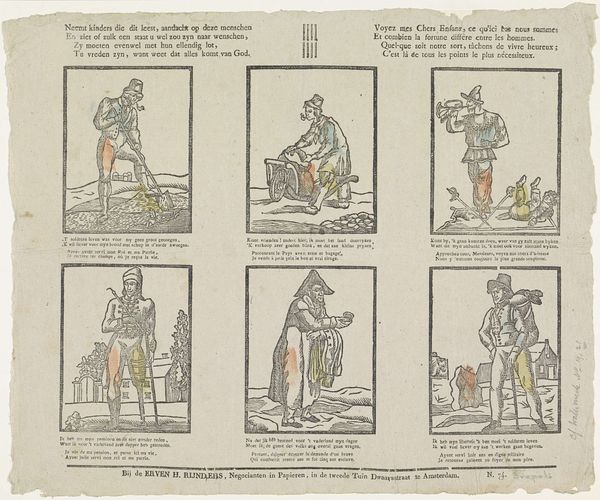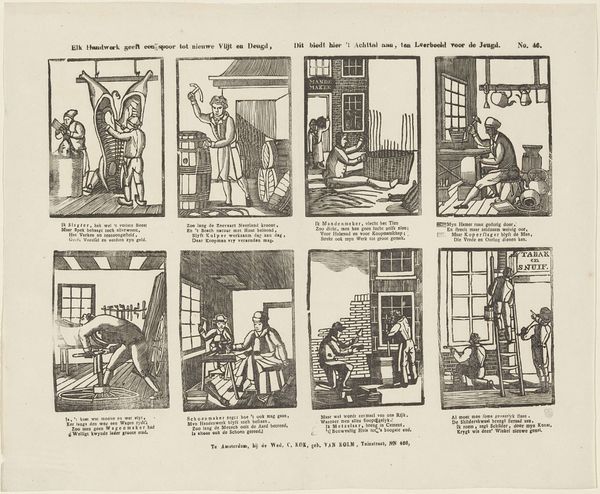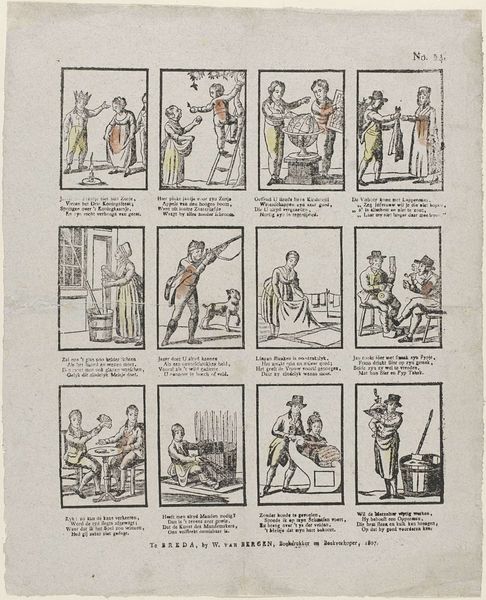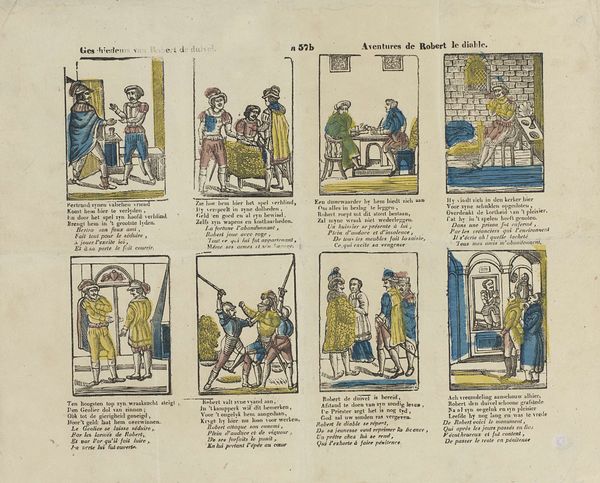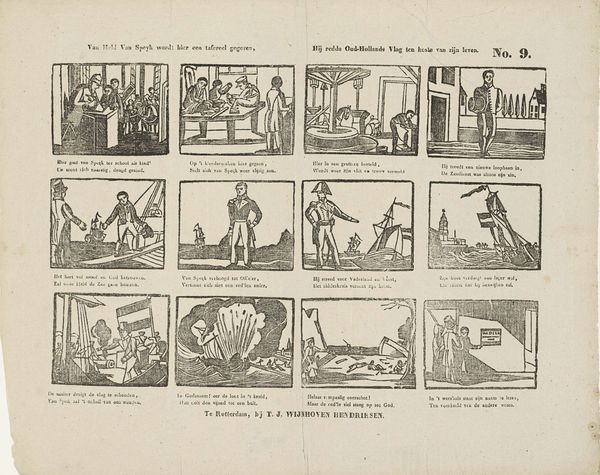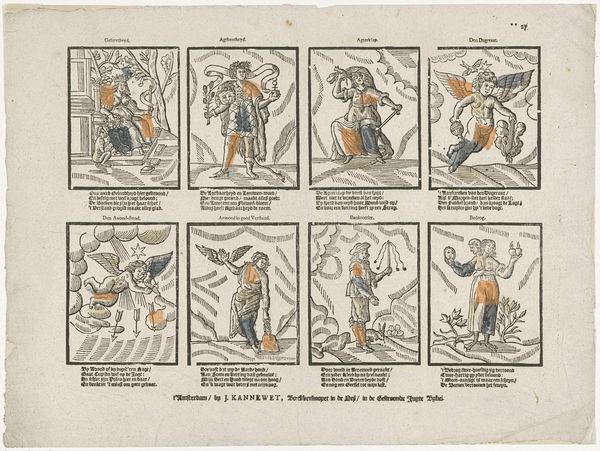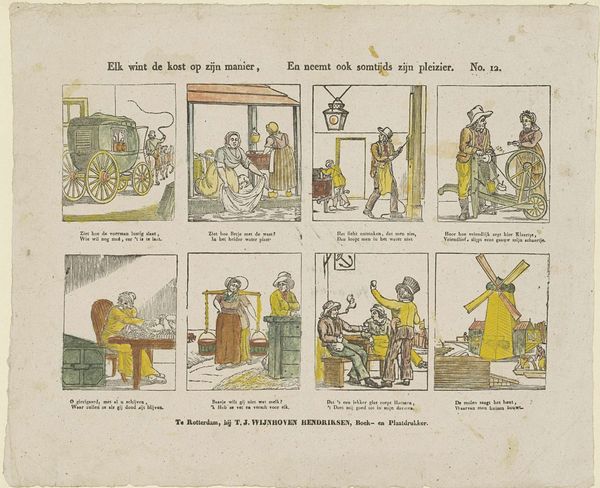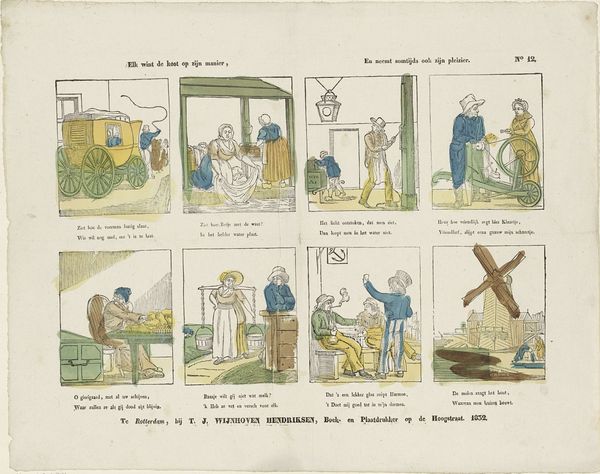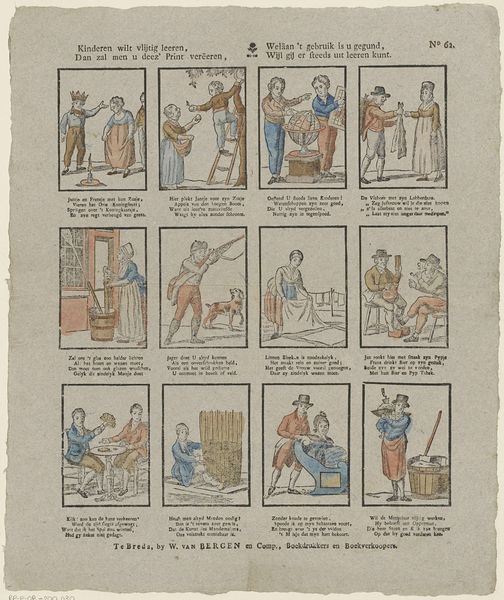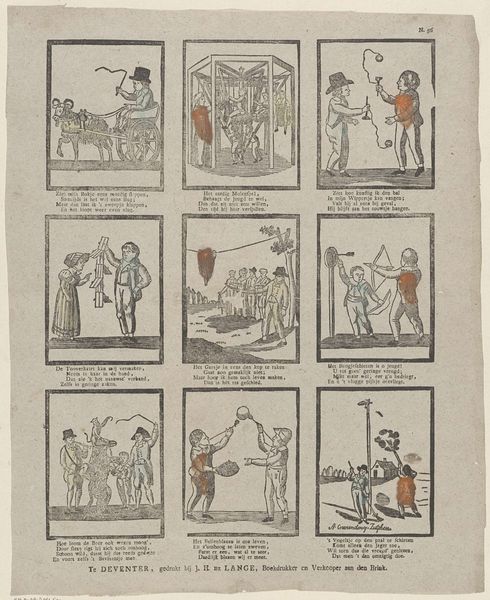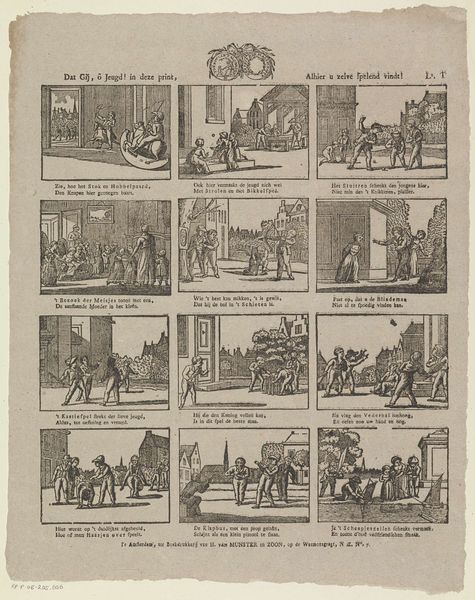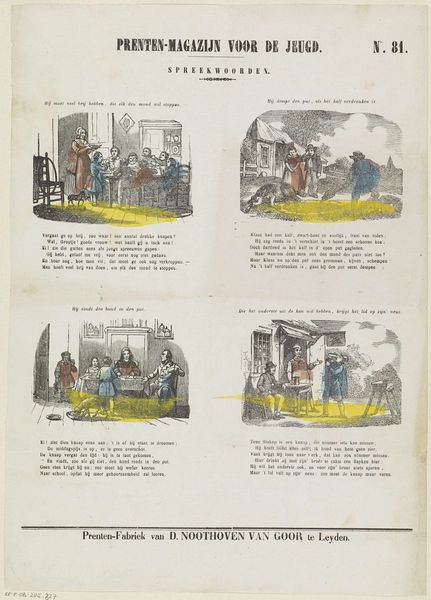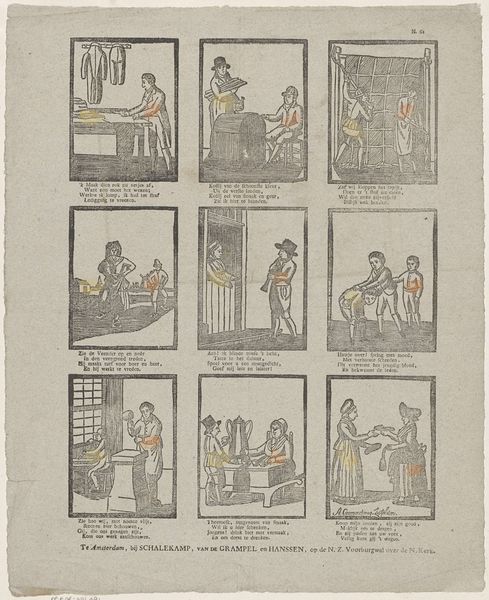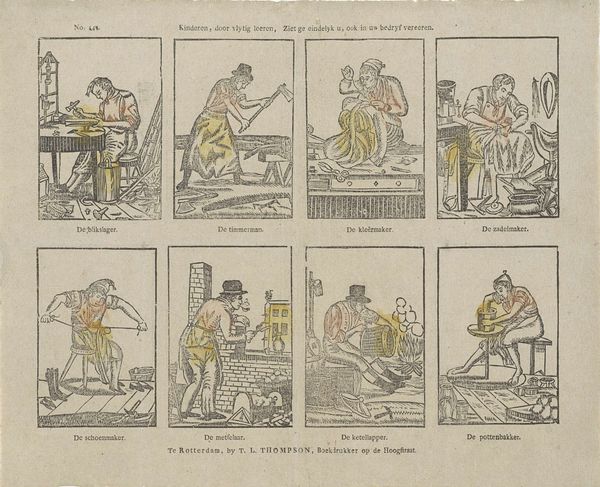
Zoo draagt elk mensch het zijne bij, / Tot heil en nut der maatschappij 1832 - 1850
0:00
0:00
theodorusjohanneswijnhovenhendriksen
Rijksmuseum
print, engraving
#
comic strip sketch
#
quirky sketch
#
narrative-art
#
dutch-golden-age
# print
#
sketch book
#
personal sketchbook
#
sketchwork
#
ink drawing experimentation
#
pen-ink sketch
#
sketchbook drawing
#
genre-painting
#
storyboard and sketchbook work
#
sketchbook art
#
engraving
Dimensions: height 287 mm, width 350 mm
Copyright: Rijks Museum: Open Domain
Editor: This is "Zoo draagt elk mensch het zijne bij, / Tot heil en nut der Maatschappij," a print made by Theodorus Johannes Wijnhoven-Hendriksen between 1832 and 1850. It's currently held at the Rijksmuseum. What strikes me immediately is its graphic novel quality—it almost feels like a series of panels depicting everyday life. How would you approach analyzing this artwork? Curator: My focus goes to the printing process itself. Engravings like this were relatively accessible means of disseminating imagery and, crucially, moral and social values. We see this in the inscription "Zoo draagt elk mensch het zijne bij," each person contributes to the wellbeing of society, the inscription hints at its intended role of socialization within the society of the Netherlands. Editor: So, it’s less about high art and more about its function in society as a readily produced commodity with embedded meaning? Curator: Exactly! Consider the materials—paper, ink, the metal plate used for the engraving. These weren't luxury goods in themselves, but the labor and technology invested in transforming them into reproducible images gave them cultural value. How was the production of these prints organized? Who had access to them, and under what conditions? The print suggests several scenes from everyday life such as working, and caring for children; however, these are idealized to support the social ideas the artist meant to promote. Editor: That’s fascinating! I never really thought about prints this way before – how they reflected the industrial processes and social values of the time. It's so much more than just the image itself. Curator: Precisely. It moves our interpretation from simple appreciation of form, to deeper engagement with the means of production. The availability of materials alongside labour dictated access, utility and social constructs reflected. This is key. Editor: I will now be thinking about art more deeply than ever before. I had previously not realised these prints held so much cultural meaning.
Comments
No comments
Be the first to comment and join the conversation on the ultimate creative platform.
